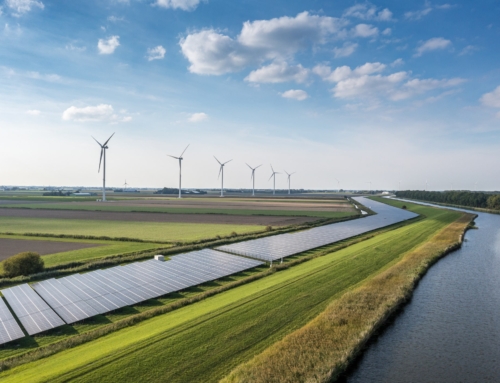What does it mean when you receive a severe thunderstorm report? While thunderstorms can vary in intensity, they gain a “severe” classification if they:
- Produce hail 3/4 inch in diameter or larger
- Create winds of 58 miles per hour or more
- Produce a tornado
But not to worry, there are precautions you can take to minimize damage that may come as a byproduct of a severe thunderstorm. Here’s everything you need to know about how to prepare for a thunderstorm.
How Can You Prepare for a Thunderstorm?
It’s difficult to predict exactly when a severe thunderstorm will strike, but you can be proactive with your preparation regardless! Here are eight tips on how to prepare for a thunderstorm before it happens. We’ve split them into two parts: before the storm and the day of.
What to Do Before the Storm
You can prepare right now for severe thunderstorms. These tasks can be done days before a thunderstorm arrives:
- Remove dead branches from trees. Wind, rain, or lightning can cause dead branches to fall and damage your home. Pruning your trees also leaves your yard looking nicer—an added reward for being prepared.
- Clean your gutters. Heavy rain from thunderstorms can overflow your gutters and drainpipes if previously clogged with debris. Clearing gutters can prevent standing water from accumulating on your roof.
- Fix your roof. Missing tiles or small holes in your roof leave your home vulnerable to damage from excessive rain and hail. Making repairs before the storm will provide additional peace of mind during the downpour.
- Make an emergency kit. You’ll want a go-bag with all the essentials: food, water, medication, clothes, and anything else you need to live comfortably. You may need to dip into this stash during a power outage. If your home becomes too damaged to live in, you can bring this kit to your temporary shelter.
What to Do on the Day of the Storm
When you receive news of a possible severe thunderstorm, there are additional precautions you may want to consider:
- Bring fragile objects indoors. Park your car inside the garage or under a covered structure to prevent damage from hail and debris. If possible, delicate objects in your yard (and on the porch) should be brought inside.
- Postpone any outdoor activity. Avoid going outside unless absolutely necessary. You may have planned a walk through the park or other outdoor adventures, but those should be postponed until after the storm.
- Unplug your electronics. You don’t want your electronics to overload in a power surge. Unplugging them is simply the best defense. Surge protectors are certainly useful, but don’t take the chance if you don’t have to—particularly with expensive electronics.
- Shutter and secure windows and doors. Close windows, doors, and shutters if you have them. Shutters offer a greater level of protection. They shield against glass shards and other debris in the event of a broken window or door.
Protect Yourself During a Severe Thunderstorm
How do you stay safe in a severe thunderstorm? Even if you’re adequately prepared, there are other things you can do to best protect yourself.
Protecting Yourself Inside
The age-old saying goes, “When thunder roars, go indoors!” The best thing to do is remain in a safe, enclosed shelter—whether in your home, office, or car. Sheltering protects you from most severe thunderstorm hazards.
There are certain precautions you should take to protect yourself while indoors:
- Avoid contact with water, such as bathing or washing dishes. Lightning can travel through your plumbing, and mixing electricity with water is never good.
- Don’t use electrical appliances plugged into outlets. Lightning can travel through electrical systems and overload your appliances. As aforementioned, consider unplugging devices and appliances during the storm.
- Avoid metal, including concrete floors and walls. The metal reinforcement in your home’s concrete structures are paths through which lightning can travel.
Protecting Yourself Outside
A severe thunderstorm can catch you by surprise while you’re outside. Here’s what you should do in that scenario:
- Move toward shelter. Keep moving toward a safe structure if you’re outside in a populated area. You may wait out the storm in a gas station or other building. Strangers may even be willing to take you in while the storm passes through. If you’re in the wilderness, make your way back to your car or a nearby shelter.
- Don’t try to take refuge under cliffs or trees. Cliffs and trees are tall, making them common targets for lightning. If they are struck by lightning, you could be hit by falling debris.
- Get away from bodies of water. Since water helps conduct electricity, being near a lake or river makes any potential lightning strike even more damaging.
- Crouch into a ball. If you find yourself stranded in an open area, the best thing to do is crouch into a ball. This helps you stay low and creates minimal contact with the ground—the more contact you have with the ground, the more vulnerable you are to electrocution.
What Are the Dangers of Severe Thunderstorms?
There are five primary dangers to severe thunderstorms: lightning, hail, wind, heavy rain, and tornadoes. Let’s break down each of these dangers.
1. Lightning
Lightning is perhaps the most unpredictable variable of a thunderstorm—it can strike at any moment and deal severe damage to anything it hits.
Lightning commonly strikes taller objects, such as trees, telephone poles, chimneys, and street lights. If lightning strikes, it may send debris such as tree limbs or bricks flying, which is hazardous for people not sheltered during the storm.
Lightning also strikes people. Fortunately, this is not common—the odds are about 1 in 500,000.
2. Hail
Large hail experienced during a severe thunderstorm can wreak havoc on people and property. The minimum hail diameter for severe thunderstorm classification is 3/4 inch. However, hail can get much bigger—the largest hailstone ever recorded was eight inches in diameter.
Remember, hail forms several thousand feet above the ground, at near-terminal velocity. Even if hail is only one inch in diameter, it can damage your home’s roof, dent your car, smash windows, and cause serious injury to anyone caught outside during the storm.
3. Wind
While thunderstorms won’t produce hurricane-force winds, any winds blowing over 58 miles per hour can do more than knock you off your feet. High winds can take out trees and dislodge power lines, leading to power outages.
If objects near your home are not properly secured, they may fly away or blow into your home, potentially defacing structures and damaging your belongings.
4. Heavy Rain
Heavy rain can saturate the earth around your home, causing landslides and flooding. Objects around your home may be washed away if rainfall is heavy and persistent enough. Flooding can also cause water damage in your home.
5. Tornadoes
Tornadoes are forces of nature, creating trails of destruction. They can rip homes from their foundations, uproot trees, and cause severe damage to communities.
If a tornado warning accompanies a severe thunderstorm warning, the best thing you can do is find shelter, hunker down, and wait for the storm to subside.
Learn How to Better Protect Your Home
This article gives you some solid ideas for preparing for severe thunderstorms. If you’d like to learn other ways to protect and enhance your home, check out some additional tips for saving energy.
At Kiwi Energy, we’re proud to offer green energy plans that power your home and protect the planet. Contact us today to learn more about our services, or find out how you can enroll.







